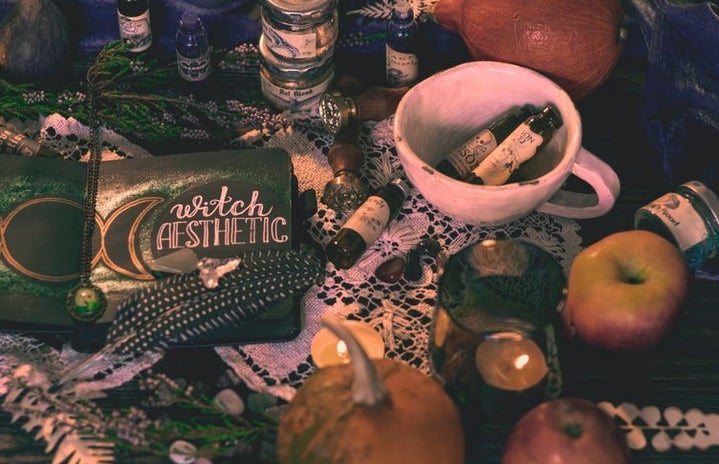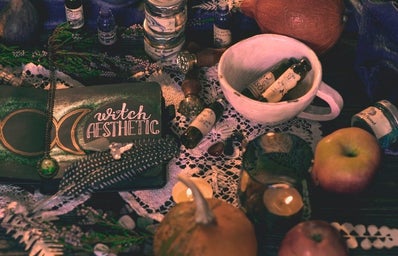I found, after three years of dating a Norse Pagan man, that it makes my skin crawl to call the Norse religion “mythology.” It feels disrespectful, an oily thing on my tongue, and yet it is the proper term. It almost feels like it is lesser when categorized this way, as though it is not worthy of the title of a religion, and I sought to find out why this is so.
Norse Paganism
First, let’s take a deeper look at why I called mythology the “proper term” when referring to Norse Paganism. Some people consider mythology to refer to, simply put, dead religions – ones that are no longer practiced – but this is not the case. Even when they were very much alive, some religions did count as mythology. Gale – a company that provides research and learning resources to libraries, academic institutions, and educators – described religion as “a system of formally organized beliefs and practices typically centered around the worship of supernatural forces or beings,” and while this technically might be applicable to Norse Paganism, the much more fitting term is, indeed, mythology. Rather than this formal system, mythology is “a collection of myths, or stories, belonging to a particular religious or cultural tradition.”
Something many people often do not realize about ancient religions – particularly the Norse religion, as its worshippers traveled and allowed the stories to morph – is that they are not standardized. Even Ragnarök, one of the most famous myths from the Norse religion, is in fact a story from a very small faction of worshippers. This variance also explains how, sometimes, Freyja and Frigg – two separate goddesses – can seem to overlap. Some sources even cite them as “Freyja/Frigg,” despite one being of the Vanir and one being of the Æsir, two separate pantheons. Think of them almost as the jocks (Æsir) and the preps (Vanir). So, too, does this explain how one goddess can be called “Hel” and “Hela,” with neither technically being an incorrect name for her.
Norse Paganism has recently, in some ways, taken on another name: Odinism, or Asatru. While “paganism” is very focused on a reverence for nature, and Norse Paganism is then that reverence blended with worship of the Norse pantheons, Odinism is much more of a traditionally recognized religion. It is the worship of the Norse gods, the following of the beliefs and traditions accorded to the mythology of them, and has a number of priests based in Reykjavik, Iceland, even as it spreads globally.
Wicca
Wicca, also known as “The Craft of the Wise,” is broadly considered to be the basis of the modern term “witchcraft.” Some of those who practice in the modern day proudly proclaim themselves to be witches, while others prefer the term Wiccan, in the same way one might be Christian or Hindu or Buddhist. I’ve had several friends – as early as sophomore year of high school – who were practicing witches, or Wiccan-adjacent. I reached out to one of them, Brooks, to interview them regarding their experience with it.
First and foremost, they are Wiccan-adjacent. “Wiccan refers more to the religious ideologies,” they said, sharing that they aligned more with the term “neo-pagan,” since “Paganism shares the natural aspect of it, [but] is more spiritual as opposed to religious.”
This is similar to my partner, in fact, when I asked whether he had heard of the term Odinism and would prefer I call him Odinist. Considering we had discussed the recent boom of witchcraft on social medias before, I wasn’t very surprised when he said he preferred being called Norse Pagan, that it was “more so a way of life to take notes and inspiration from,” not a strict dogma, and that he knew he wasn’t “the most devoted of followers” to the Odinist way.
That boom, that rapid growth of these pagan religions, fascinated me, and apparently it fascinated NBC News, too. They found that we are truly in an incredible era, one that expects the amount of Americans practicing religions outside of “Judaism, Christianity, Islam, Hinduism, and Buddhism [will] triple” by the year 2050. They claim that media like “Charmed” and “The Craft” sparked interest in a swath of young viewers, and the ability to find communities online buoyed that initial curiosity, resulting in this massive new group.
blending
NBC News writer Antonio Pagliarulo also discusses the blend of organized religion and folk magic, of which Wicca is part. For his family, it was Italian folk magic, a mix of pagan witchcraft and Roman Catholicism. He mentions an example of prayer to the archangel Michael accompanied by “offerings of wine, bay leaves, and cloves,” a traditionally heretical idea to some other sects.
This kind of merging of existing culture and expanding religion is seen worldwide. At the forefront of my mind, there is the Romani “Saint Kali,” a Christian morphing of their traditional, Hindi goddess, Kali. In India, Christianity is much more idol-centric, as the local religion – and, thus, the culture on how worship is carried out – uses sculptures and statues more often than European Christianity does. Lastly, there is a distinct variance of Islam in almost everywhere it has spread to. Indonesian Islam features a headscarf called a “tudung,” rather than the South Asian and Middle Eastern hijab or niqab; the Chinese Muslim group, Uighurs, became a hot-button topic within the past couple of years; many American Muslim women, of course, are held to a different standard than those in traditionally Muslim nations. All of these – and many more – show how even a centralized, standardized religion can take on traits of the cultures it encounters. Paganism likely varies for every single worshipper of it as it lacks even that level of homogeny, and the many different sects of Christianity also reflect this tendency to vary based on culture.
Heathen, heretic, or holy?
The way we name things affects how we think of them – consider all the jokes of: “If a tomato is a fruit, is ketchup a smoothie?” – and the way we have titled paganism as heathenry, Odinism as mythology, and Wiccans as witches to be burned have all affected our perceptions of these religions. With the recent boom in new practitioners, high priests, and gatherings for worship, we must all take a step back and ask ourselves: What do I think when I hear those terms?
In another life, perhaps, when I was crouching next to Brooks’ altar, set with candles and tarot cards, I might have asked myself another question: Do I believe in magic?
In another life, perhaps, my answer might have even been: Yes.


